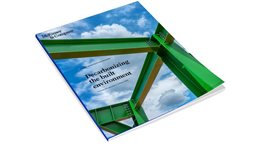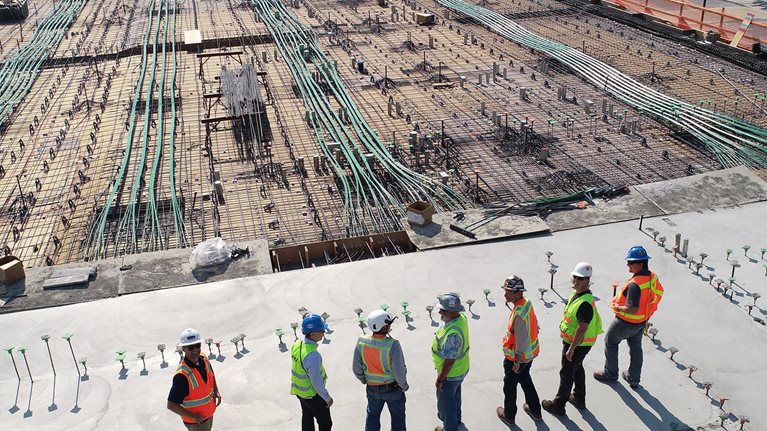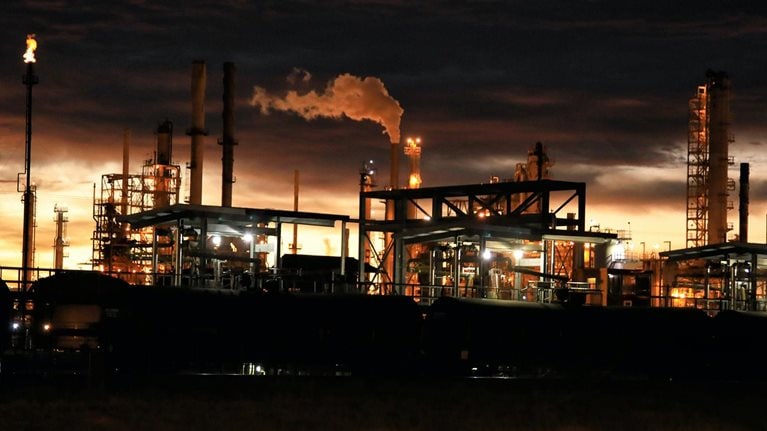In April 2022, McKinsey published the report Net-zero steel in construction: The way forward, a collaborative effort by Pedro Assunção, Brodie Boland, Trevor Burns, Emanuele D’Avolio, Alasdair Graham, Focko Imhorst, Ingrid Koester, Carl Kühl, Rory Sullivan, and Alex Ulanov, representing views from McKinsey’s Metals & Mining and Sustainability Practices and the Energy Transitions Commission.
The following article is an edited overview of the report’s key findings.
As the world transitions to lower greenhouse gas (GHG) emissions, construction companies have a major role to play. In making the green buildings of the future, they have a chance to tap into demand that spans geographies and architectures. Indeed, greener business models are potential magnets for trillions of dollars earmarked for sustainable investment.
The decisions made by construction executives now will determine how they are positioned for this transition over the coming decade. Those who prepare astutely are likely to seek out emerging pockets of innovation and increase their investment in sustainable technologies and capabilities. New materials such as green steel are more expensive, and will therefore demand a new pricing model. However, they can significantly reduce embodied carbon in commercial buildings by up to 70 percent by 2030.
Amid tight industry margins, a priority for decision makers will be to ensure there is a solid business case for change. The key will be to establish a market position while adjusting to a new cost base. Decision makers must also ensure that greener business models are aligned with demand that will rise at an uncertain pace over time.
Construction industry emissions
From houses to bridges, hospitals, and skyscrapers, the construction industry is responsible for approximately 25 percent of global GHG emissions. A third of emissions are associated with materials and the construction process—“embodied carbon.”1 One reason for the industry’s high emissions is that it is a voracious consumer of steel, accounting for more than 50 percent of global demand.2 Due to the energy required for its production, steel is a carbon megaproducer, responsible for about a quarter of emissions in the construction process.3
Would you like to learn more about our Global Infrastructure Initiative?
Given these metrics, decision makers in both steel and construction need to plot a realistic path toward a lower climate goal. Massive changes are required to align with pathways established under the Paris Agreement, but by shifting from high-emissions steel to near-zero-emissions steel, the industry could take a significant step forward.
Decarbonizing steel
Partial steel decarbonization is possible through wider use of modern furnace technologies in steel production. The most efficient furnaces are powered by natural gas and use energy-efficient direct reduced iron or hot briquetted iron (DRI/HBI). These emit much less GHG than traditional coke-fueled blast furnaces or basic oxygen furnaces (BF/BOFs), which account for approximately 73 percent of global production and are dominant in Europe and China.4
Another route to lower-CO2 steel would be to retrofit BF/BOFs for carbon capture and storage (CCS) or carbon capture and utilization (CCU). If these approaches scale successfully, they could theoretically enable sequestration of about 85 percent of CO2 emissions from coke feedstock. Ideally, producers would be able to scale hydrogen-reduced DRI/HBI electric-arc furnaces (EAFs) powered with renewable energy. With this combination, producers could make steel with a carbon intensity of less than 0.2 tCO2 per metric ton of steel, compared with a global average of 1.8 tCO2 with today’s cleanest technologies. High costs would require steel to command a “green premium” of 20 to 25 percent over 20 years to fund the construction of new facilities, not including capital expenditure for hydrogen production, transport, and storage (Exhibit 1).

Navigating hurdles
Beyond technical challenges, companies face significant commercial and structural barriers. The sector’s generally low margins could certainly dampen producers’ appetites for green technologies.6 Established approaches produce steel for approximately $400 to $500 per metric ton at the slab level. Near-zero-emissions steel is more expensive, albeit with significant variations based on technology, location, and project.
Another barrier to adoption is that individual developers do not routinely count emissions from the steel they consume,7 and no certification or grading system has been widely adopted to date.8 Furthermore, the steel industry services a highly fragmented construction landscape, making effective change at scale more difficult to achieve (Exhibit 2).

Opportunities for the commercial sector
Despite many challenges, economically feasible progress is possible.9 Analysis shows it would be possible to reduce an office building’s embodied carbon by about 1,250 metric tons (or 70 percent) through alternative technologies, materials, and steel production methods that we expect to be widely commercially available by 2030.10
To achieve these reductions, producers should prioritize efficiency in construction materials and design, as well as migrating to lower-CO2 steel, concrete, flooring, and tiling and replacing structural steel and concrete with glulam beams, cross-laminated timber (CLT), and timber.11 Companies could also embrace electrification of on-site equipment such as generators and machines.

Voices on Infrastructure: Decarbonizing the built environment
To meet abatement goals, the construction sector should start moving toward greener technologies, planning for realistic economic scenarios, and standardizing measurements, labeling systems, and methodologies to track levels of embodied carbon. This would enable decision makers to set targets more confidently and plot decarbonization pathways.
To unlock demand, developers, operators, owners, and large occupiers could form buyer’s clubs to aggregate purchase commitments. In addition, they could commit to offtake agreements with near-zero-emissions mills and seek out dedicated green funding. Financers could facilitate that process by setting up systems to track and report on funding and by leveraging environmental product declarations and life cycle assessments to support quantification.
Through this range of efforts, greener technologies could enable a significant reduction in steel industry emissions, and therefore create a more sustainable construction industry. In the context of a fast-warming planet, the imperatives for decision makers should be to seize the moment, adopt a radical mindset, and take concrete steps to transition to a greener future.
This article is part of Global Infrastructure Initiative’s Voices on Infrastructure.


